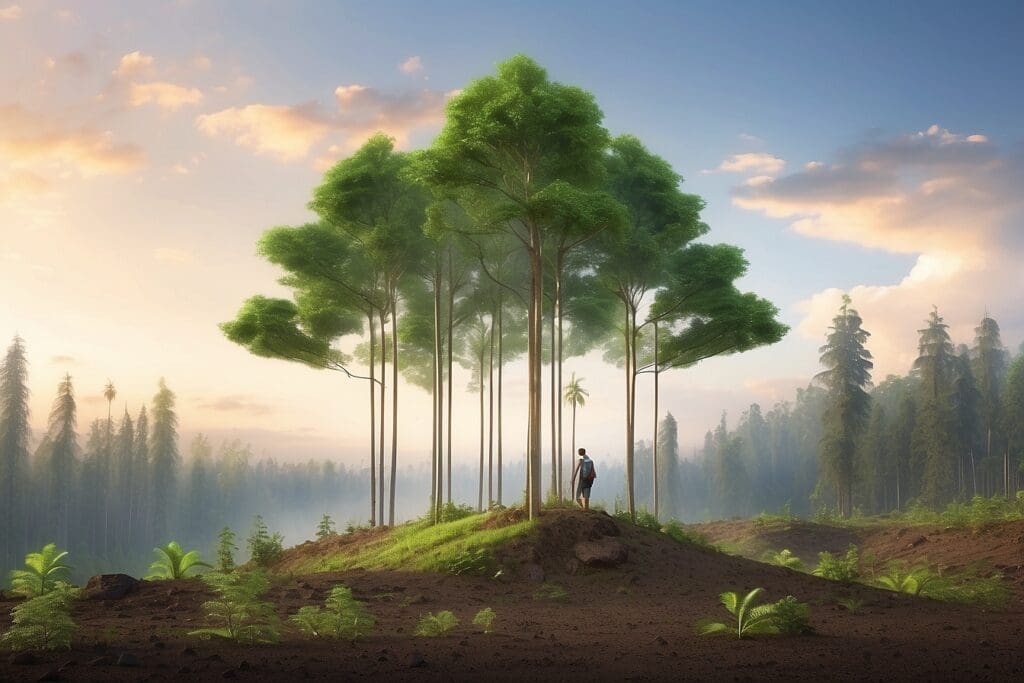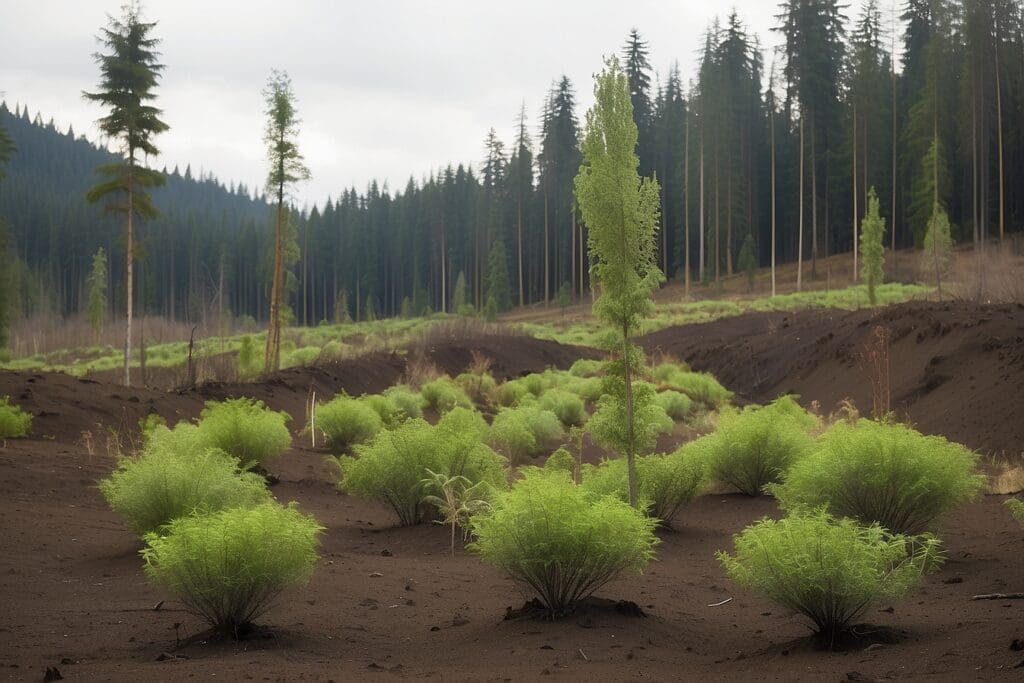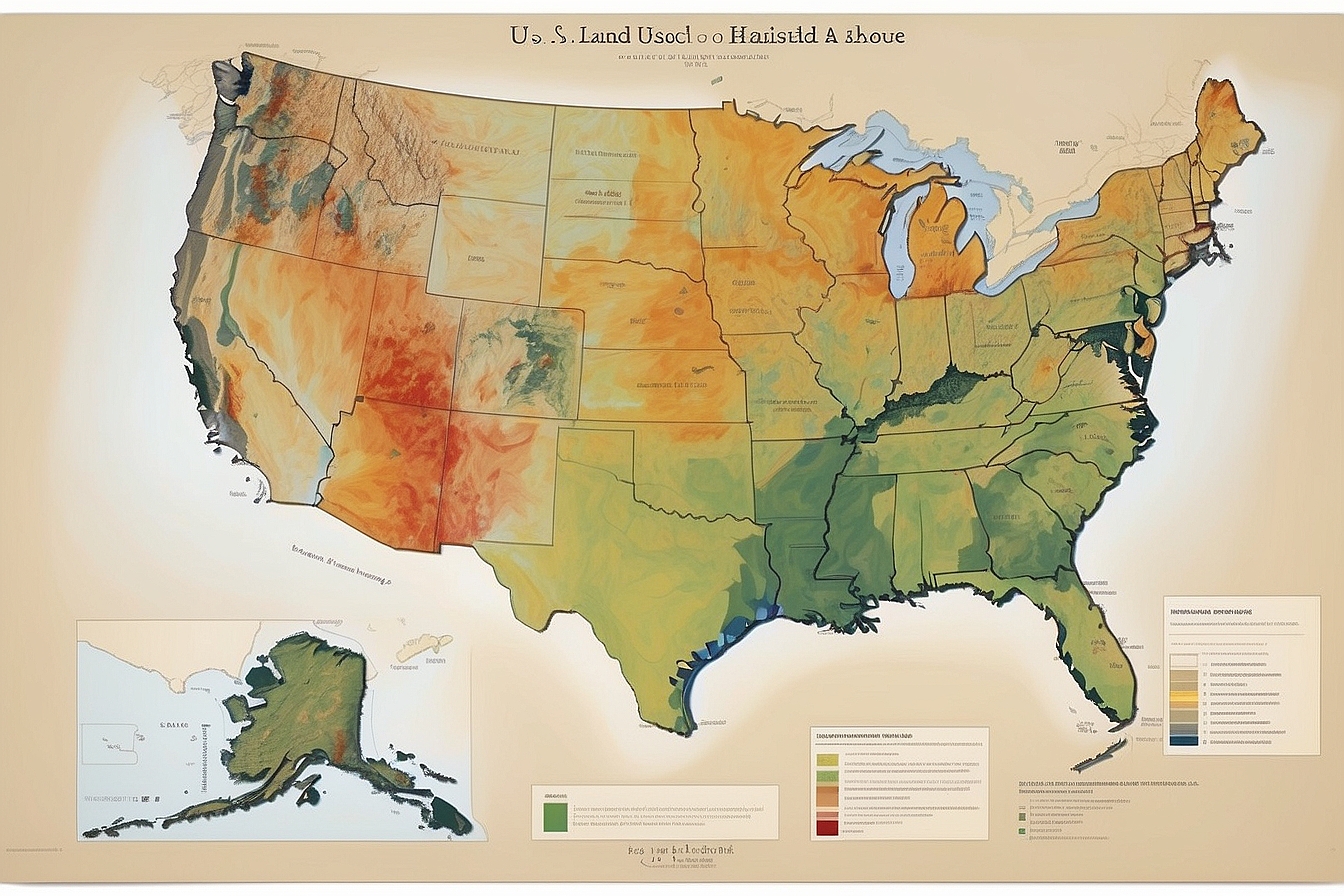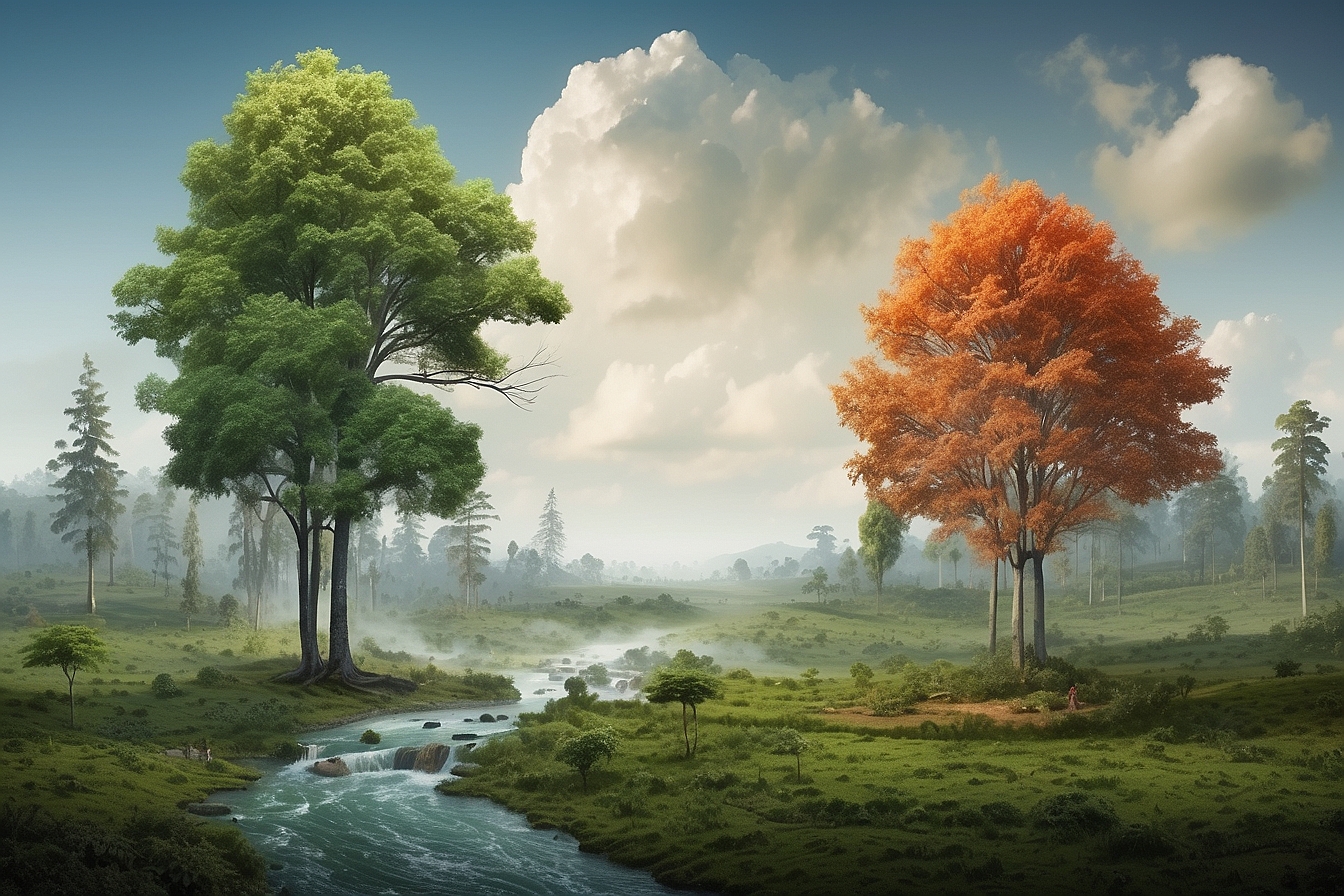According to the United Nations’ Food and Agriculture Organization, 18 million acres, roughly the size of Panama, of forest are cut down each year.1 Deforestation is a word we hear thrown around quite a bit; deforestation is the clearing of forests by logging or burning trees.2 While the negative environmental impacts of deforestation are well documented, reforestation is not often talked about as a solution to this problem.
Deforestation vs. Reforestation
is transforming a forest into cleared land by cutting or burning down trees. Reforestation, on the other hand, refers to planting trees on land that had recent tree cover, meaning it was recently a forest. Afforestation is another act of planting trees, but it occurs on land that has not been forested either in historical time or in the current climatic conditions.3
Causes of Deforestation
There are many causes for deforestation. One reason is to make land available for housing and commercial buildings. Another is to harvest wood to make items such as paper and furniture. Some trees, such as palm trees, are cut down to create products such as palm oil, an ingredient found in an overwhelming number of products.4
Two large reasons for cutting down forests are to make room for commercial agriculture and cattle ranching. Soybeans alone count for 68% of forest loss in Latin America, and 40% of forest loss worldwide. Researchers forecast that in the next 40 years, sugarcane and agriculture will expand by 20 million hectares (twice the size of Hungary) in Brazil.5 Cattle ranching also requires a lot of open space. While 1.5 acres of land can produce 37,000 pounds of plant-based food, the same amount of land can only produce 375 pounds of meat.6
There are two common methods of deforestation: burning. Burning can either be done quickly to large portions of land or via the slash and burn technique. Slash and burn is used in agriculture because the ash provides nutrients for the crops. Clearcutting is exactly what is sounds like – cutting down trees all at once over large portions of land. The National Resources Defense Council describes it as, “an ecological trauma that has no precedent in nature except for a major volcanic eruption.”7
Impacts of Deforestation

Forests still cover approximately 30% of Earth’s land area but that percentage is quickly decreasing.8 Unfortunately, deforestation has a myriad of negative impacts on our environment. First, deforestation is a major contributor. Deforestation also alters the way that water vapor, another greenhouse gas, travels through Earth’s systems.9
According to National Geographic, 70% of the world’s plants and animals live in forests. When species go extinct due to habitat loss, it not only affects that habitat’s food chain, but it also impacts the humans that rely on those species for medicine and sustenance.10
Lastly, without tree roots, soil cannot be held in place. Since the soil can easily wash or blow away, it is difficult for vegetation to regrow on the deforested area.11
Complications of Reforestation
An obvious solution to deforestation would seem to be reforestation, and indeed there are benefits to replanting trees. Benefits include more carbon dioxide being absorbed from the atmosphere, increased habitat for species, and preventing. However, it turns out that reforestation is a far more complex process than just replanting trees. Researchers have found that replacing broadleaved tree species, such as oak and birch, with conifers, such as pine and spruce, over the past few centuries has inadvertently contributed to global warming. This is because conifers are darker in color and therefore absorb more solar radiation than trees such as oak and birch.13
Europe is a prime example of mismanaged reforestation. Between 1750 and 1850, Europe’s forests were dramatically clear cut. Now, humans manage 85% of Europe’s forests. However, research has found that controlled forests store less carbon than natural forests. Dr. Kim Naudts, one of the researchers, said, “Even well managed forests today store less carbon than their natural counterparts in 1750.” This is because removing trees releases more carbon than when a tree naturally dies and becomes part of forest soil and leaf litter. Moving forward, scientists are urging governments to think carefully about which tree species they are planting as countries embark on mass planting projects.14
Check out globalforestwatch.org to see interactive maps tracking the deforestation and reforestation occurring around the world.





